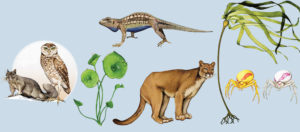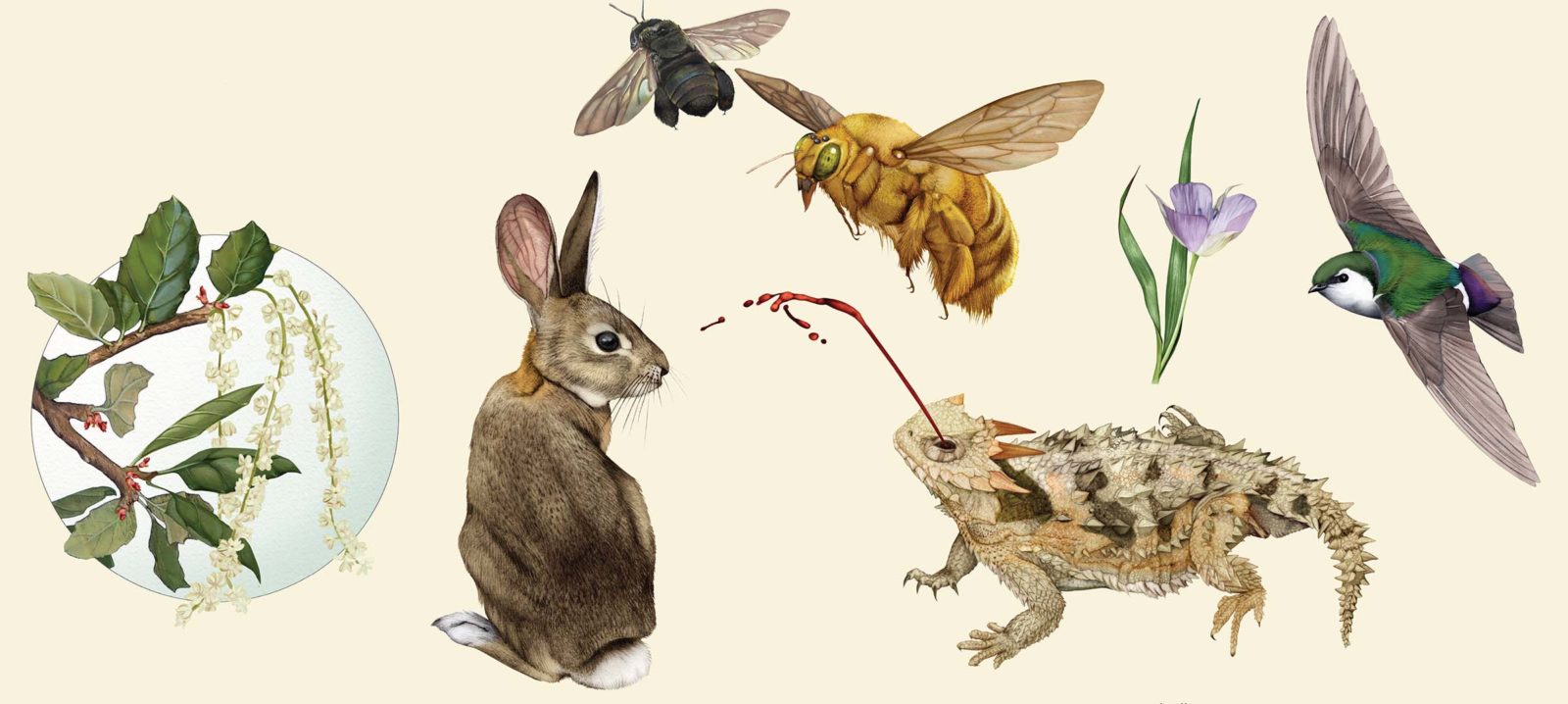
Text and research by Bay Nature staff.
Life during Spring. In the Bay Area, humans like to gather outdoors, sometimes with a cocktail in a backyard or with a water bladder along a trail, when the warmer weather and longer days set in. They also like to talk about nature and the most notable local species. Here is some of what they might be discussing this season.
Pollination

For all the fecundity associated with coast live oaks (Quercus agrifolia)—generous acorn crops, home to hundreds, the definer of ecosystems—their reproductive parts are pretty low profile. Warm weather triggers clusters of droopy yellow-green male flowers with anthers and spiky red female flowers with pistils to grow on the same tree. The flowers often release their yellow pollen in April, spreading and receiving it by the wind. At the same time the oak’s stems complete their growth and photosynthesis kicks into high gear. All this essential exchange and growth, foundational to our Bay Area identity, unfolds quietly without much notice. (Unless, of course, the pollen makes you sneeze.)
Home
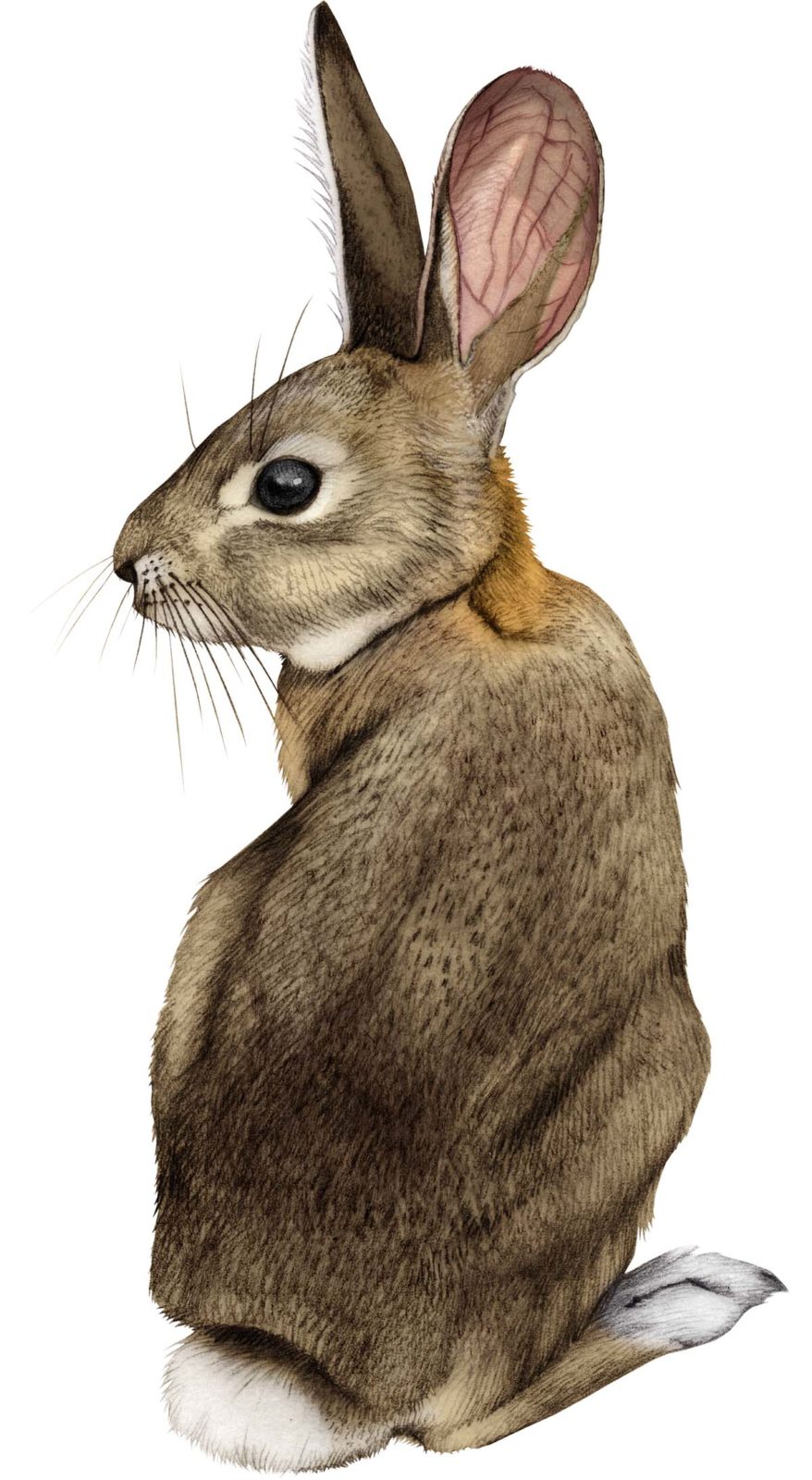
The bunnies you may encounter this spring at the trail’s edge or grassy shoulder are very likely brush rabbits (Sylvilagus bachmani), the Bay Area’s consummate cottontail. They don’t like to stray far from their particular thickets of coyote brush, poison oak, willows, and other brambles. Mostly solitary, each rabbit inhabits a warren of vegetation tunnels and hiding spots that can extend up to an acre. An individual can live there for years. When you spy a brush rabbit, you have found its home.
Teddy bear bee
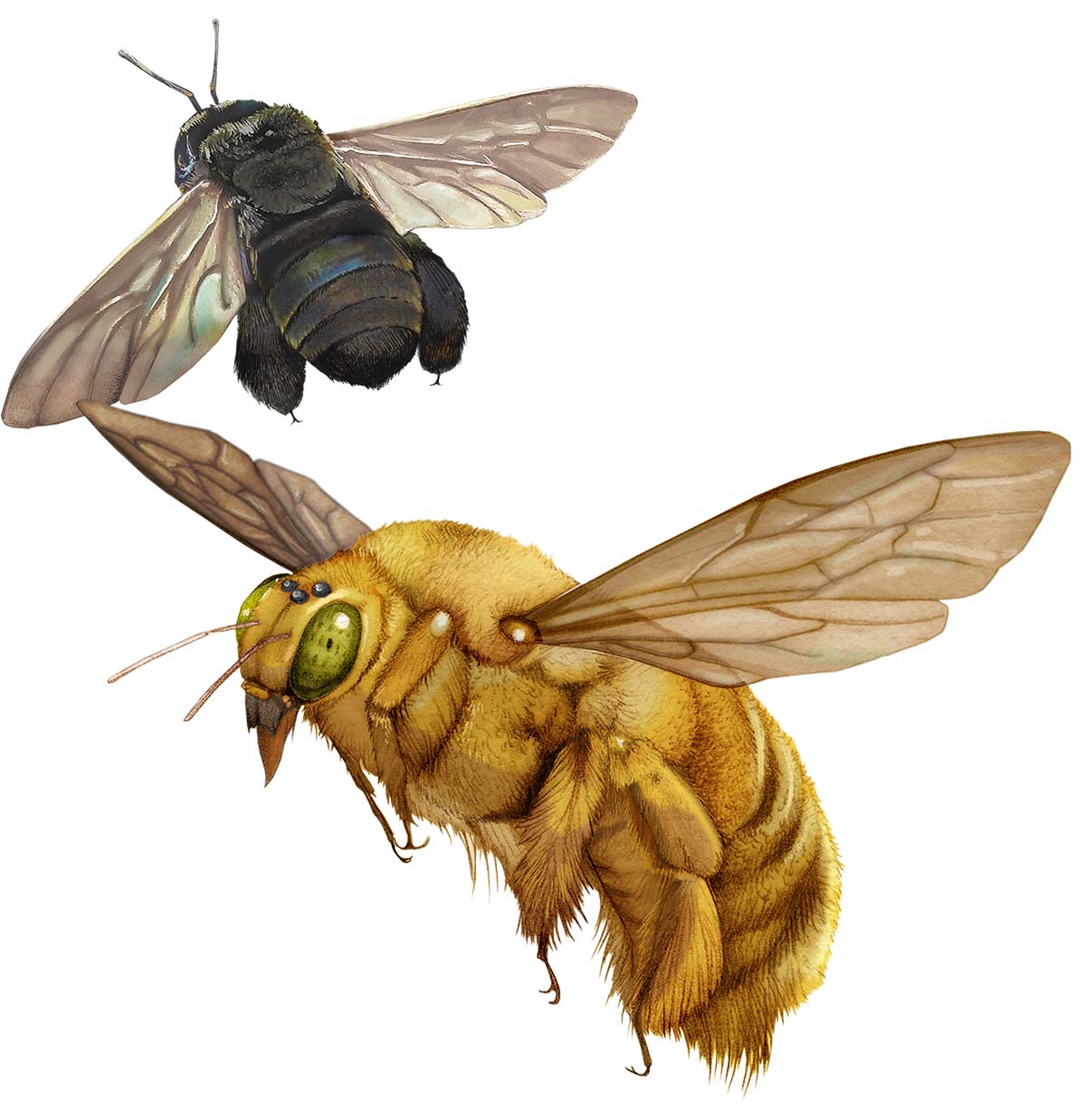
The male valley carpenter bee (Xylocopa sonorina) is among the biggest, noisiest, flashiest, and maybe the fuzziest bees in California. For all that, it lacks a stinger and is too large to fit into tube-shaped flowers to collect pollen—think Winnie-the-Pooh stuck in Rabbit’s hole. These golden males have one goal in spring and spend a lot of time releasing female-attracting pheromones to achieve it. Keep an eye and ear out for these magnificent busy bees in urban and suburban gardens.
Cool reptile
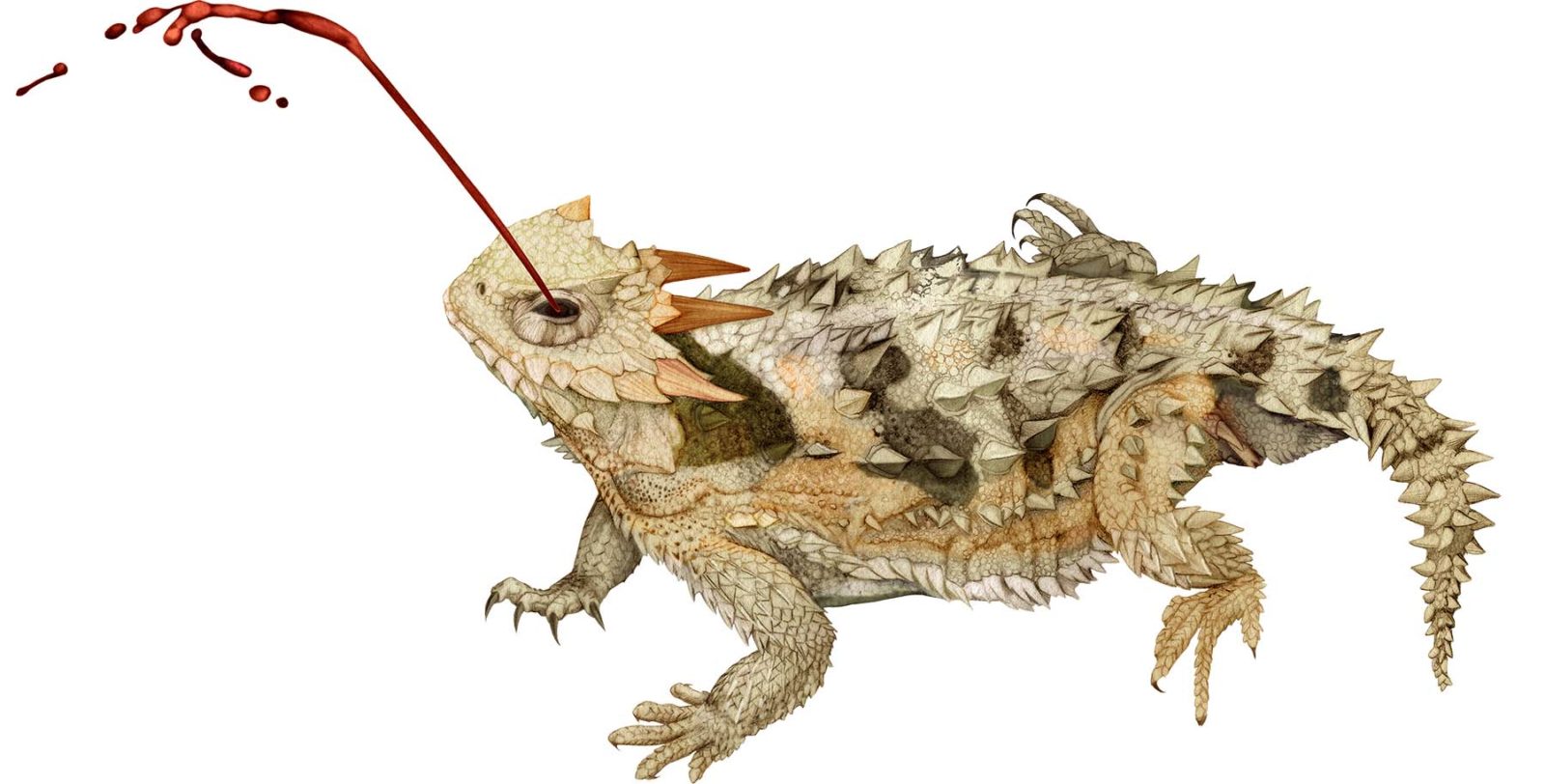
The Blainville’s horned lizard (Phrynosoma blainvillii) likely isn’t the first species that comes to mind when you’re bantering about cool Bay Area fauna (as one does), but it probably should be. It’s endemic to California and Baja, mainly eats native harvester ants, and as a defense of last resort, squirts blood from its eyes. Projected from pores, the blood can reportedly reach as far as six feet forward or backward, startling predators. Compounds in the blood also irritate canids like coyotes, foxes, and dogs. The horned lizards will be seeking mates this spring during the warm weather in South and East Bay counties.
Beautiful grass

Pink star. Butterfly. Splendid. Pussy ears. Cedars. And superb. All names for the 20 species of the beloved mariposa lilies (Calochortus) that brighten Bay Area spring. The bulbs sprout, bloom, and wither more or less between March and July and make for a good seasonal adventure. How many species of these flashy blossoms with their six petal-like structures can you find? Search the genus on iNaturalist for ideas on where to look. Our favorite: pink star tulip (Calochortus uniflorus) has been seen around Mount Tamalpais and Marin Municipal Water District lands as well as neighboring Ring Mountain.
Swallow trails
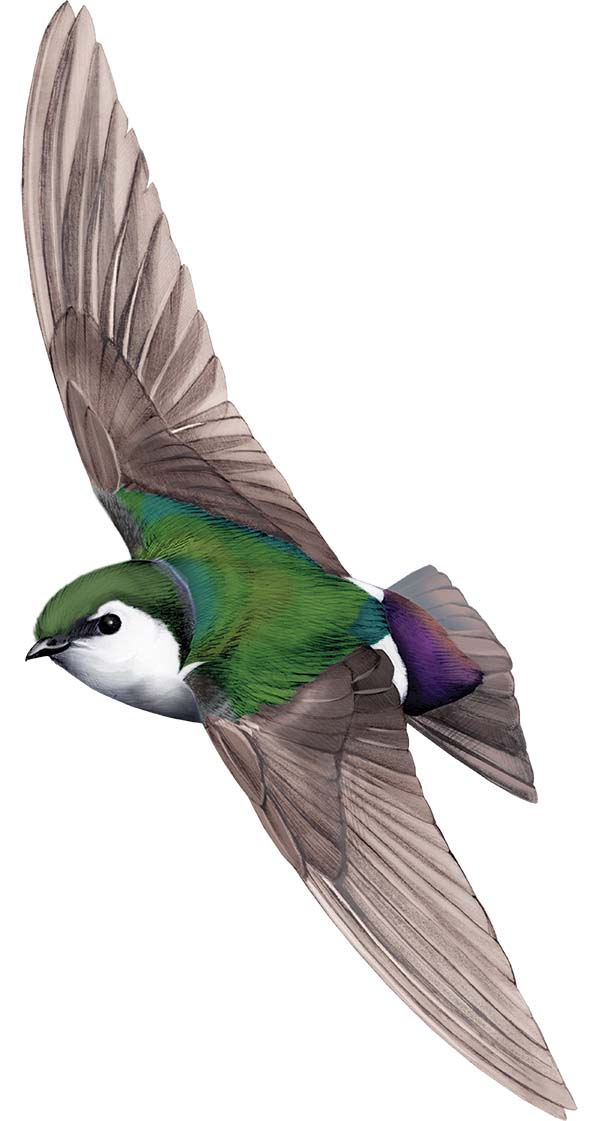
From spring’s explosion of hatching insects follows an influx of migrating swallow species eager to eat them. Large groups of glittering violet-green swallows (Tachycineta thalassina) and sapphire-hued tree swallows (Tachycineta bicolor) swoop and dive after airborne insects around fresh water, which helps fatten up swallow nestlings for the eventual flight south to Mexico and Central America during fall. Both species feast on flies, true bugs, bees, winged ants, and, interestingly, spiders that are presumably ballooning on spring winds.



